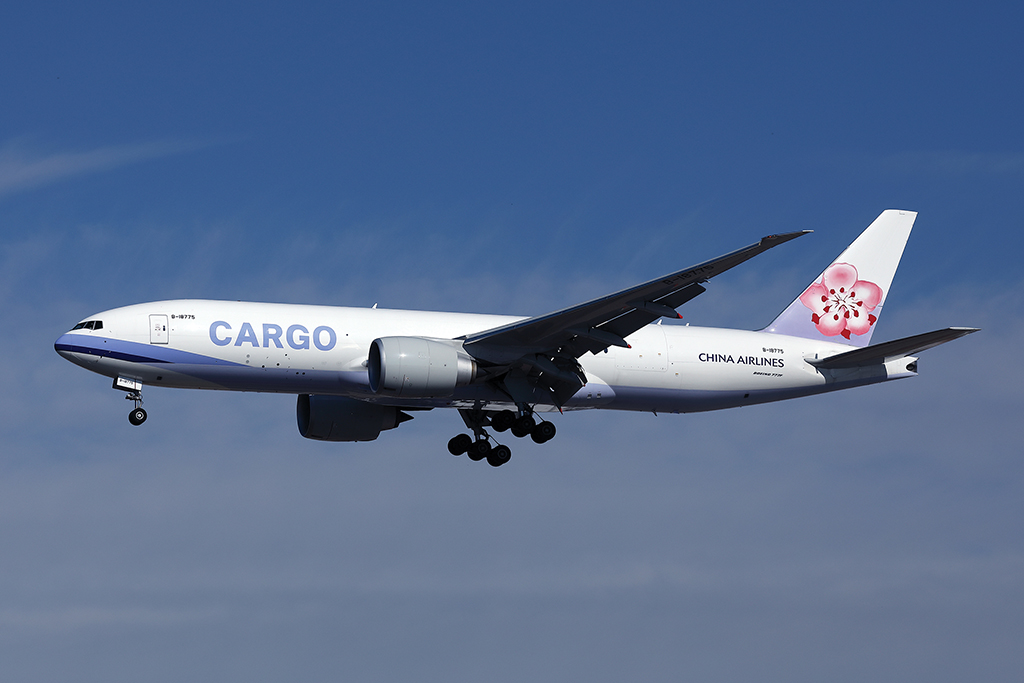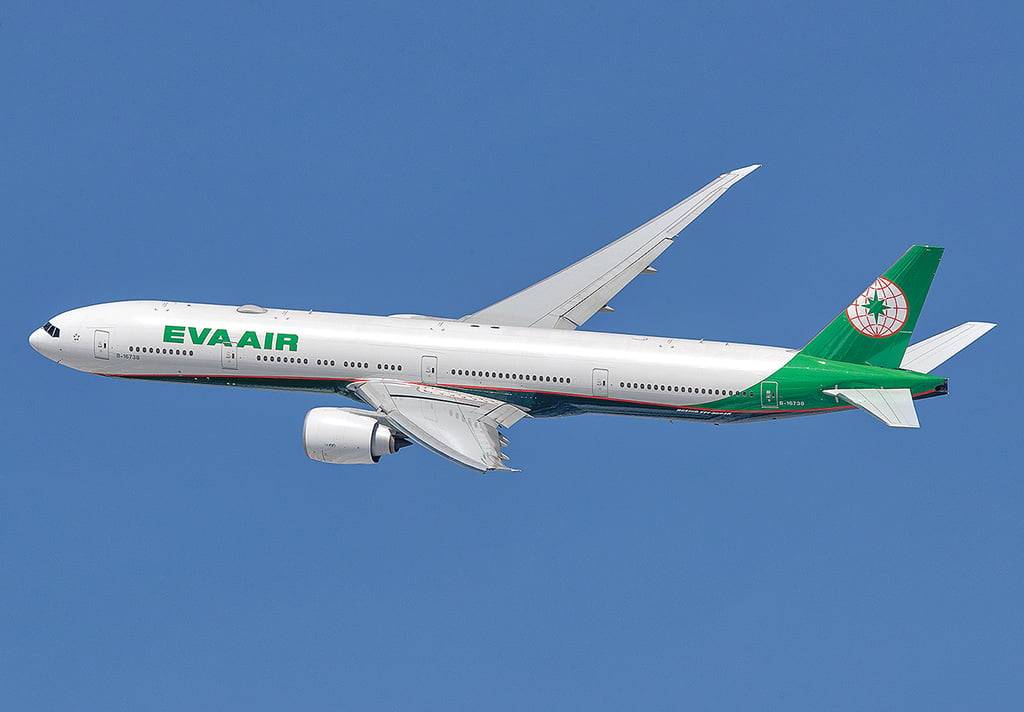
Starlux Airlines, a Taiwanese premium service carrier, launched its first transpacific route, connecting Taipei and Los Angeles, in April 2023.
With the Taiwan Straits to the west and the Pacific Ocean to the east, air transport is crucial to Taiwan’s trade, movement of people and relevance to the rest of the world, which is reflected in the number of home airlines. The island has a population of 23 million people and three international carriers, one LCC and two domestic full-service airlines.
The three international carriers—China Airlines (CAL), EVA Airways and newcomer Starlux Airlines—are largely unaffected by the political tensions between Beijing and Taipei, although there were flight delays and cancellations when China conducted wargames near the island following the visit to Taiwan by then-US House speaker Nancy Pelosi in August 2022.
EVA and CAL fly to Chinese cities like Beijing, Shanghai and Guangzhou, but China has yet to add Taiwan to the approved list of countries for tour groups, slowing a full recovery from the Chinese markets. The Chinese and Taiwanese public nevertheless remains undeterred by cross-Straits relations, evidenced by the strong demand on CAL’s Beijing and Shanghai flights, which have exceeded 2019 levels.

EVA president Clay Sun noted that although Chinese passengers accounted for around 23% of total inbound into Taiwan in 2019, they contributed just 7% to EVA’s revenue because of lower prices on short-haul flights across the Straits.
Beyond China, Sun said capacity to Europe and southeast Asia had exceeded 2019 levels, and EVA will continue to add North America services, taking it from 85 to 87 weekly flights during this winter schedule.
CAL president Kao Shing-Hwang said Taiwanese airlines cannot rely on locals and tourists alone, but being at the nexus of northeast and southeast Asia, they have a geographic advantage for transit offerings on intercontinental flights to North America and to Europe.
AIRPORT GROWTH
Around 20% of all passenger movements at Taiwan Taoyuan International Airport (TPE) are transit, with EVA taking the majority share because of its larger passenger fleet. But that pursuit of the transit markets has also led to a lack of slots at TPE. A wave departs TPE in the morning for the southeast Asian markets and returns in the evening, in time for the North American wave. This results in bottlenecks during certain hours.
TPE has two runways serving two terminals. TPE deputy director for corporate development Anne Lo told ATW that the airport has completed the land acquisition for the construction of a planned third runway, which is targeted for completion in 2030. The combined three runways are expected to take the total movements from 50 an hour to between 80 and 90.
Whether the higher number of movements will make a difference without extra slots, however, is unclear. Kao said the lack of slots means aircraft hold in the air for longer, wasting time and fuel, and contributing to emissions and costs.
More helpfully, TPE is in the middle of building a third terminal, which will open in stages starting at the end of 2024 with eight gates at the northern concourse. A main passenger handling terminal will open at the end of 2025 and a southern concourse will open the following year. There will also be five gates at the western concourse and five remote bays.
All this will grow TPE’s total annual capacity from 45 million to 82 million passengers. Additionally, a satellite concourse is under consideration that would be located between the two northern runways. And another cargo terminal will be ready by the end of 2024, increasing annual cargo handling capacity from 2.8 million tons to 4 million tons.
Lo said TPE is also in the process of drafting a new 2024 master plan—a holistic roadmap that will address areas of sustainability, resilience and smart operations.

This helps validate why Taiwan’s international carriers are all planning for growth. For CAL and EVA, in particular, Taiwan’s relevance to the global electronic supply chain allowed them to stay busy even at the height of the pandemic because demand for those goods increased.
Sun said EVA has established a network to cities like Singapore and Boston to support the semiconductor supply chain. However, despite the global shortage and surging demand for chips, Sun said the airline does not earn much from the transportation of chips because they are light, unless the value of the cargo is declared.
Although there is no business integration between EVA Airways and its affiliate Evergreen Marine, Sun said the company is monitoring trends in the shipping industry to capture potential demand for air cargo. For example, climate change has led to the lowering of water levels in the Panama Canal, so ships transiting that passageway are being asked to reduce their tonnage, which may drive increased demand for air cargo to the Americas.
It was CAL’s large freighter fleet that kept the airline afloat during the pandemic when there was a shortfall in shipping capacity, combined with a need for more microchips and electronic products around the world. CAL now accounts for up to 57% of all cargo movements at TPE and is the world’s 10th-largest cargo airline based on FTKs. CAL has focused on transporting semiconductor machines, which give higher yields because of their sensitivity and value.
Starlux, meanwhile, entered the Taiwanese market in January 2020 under founder and chairman Chang Kuo-wei, a former EVA chairman, after announcing a deal for 17 Airbus A350s in 2019. The widebodies are configured with first, business, premium economy and economy cabins.
Starlux chief strategy officer Simon Liu told ATW that post-pandemic customers are willing to pay more for travel comfort, but are also are more accepting of immersive local itineraries and limited high-priced luxury journeys that emphasize sophistication and enjoyment.
“There’s a unique segment within the Asian premium aviation market that remains underserved. We saw a noticeable uptick anticipated in passengers opting for first class and business class compared to the pre-pandemic period. Consistent demand for luxurious leisure travel further contributes to enhanced gross profit performance,” Liu said.
“Cost optimization and passenger experience are crucial, and balancing the two factors is challenging. However, ultimately, the customer experience leads to customer satisfaction.”
Starlux is now profitable after three years of limited flying, and is building its North American routes, beginning with Los Angeles, which launched in April, and San Francisco from Dec. 16.
FLEET PLANS
All three airlines have begun evaluating potential future aircraft acquisitions to increase capacity on their key trunk routes, and the current supply chain issues and delivery delays are clearly on their minds.
“We can assume that there is no on-time delivery now, and we cannot take a wait-and-see mentality,” Kao said. CAL is evaluating the Airbus A350-1000 and Boeing 777-9 to replace its leased 777-300ERs, aiming to make a decision by 2024.
Similarly, EVA is leaning toward a potential 777-9 fleet. As an operator of GE-powered 777s, Sun said he has to consider maintenance costs because A350s are powered exclusively by the Rolls-Royce Trent XWB.
Halfway through taking delivery of its first batch of aircraft orders, Starlux has also begun studies for a second order. The airline has a backlog of nine A350-900s and eight -1000s. Lo said he anticipated a second order could exceed 50 aircraft.





